Free Shipping on orders of $49+ | Signup for Direct Rewards
Free Shipping on orders of $49+ | Free Store Pickup | Signup for Direct Rewards
Free Shipping on orders of $49+ | Signup for Direct Rewards
Free Shipping on orders of $49+ | Free Store Pickup | Signup for Direct Rewards

Everything you ever wanted to know about scuba BCDs is right here. BCD stands for Buoyancy Compensator Device, or Buoyancy Control Device, and its purpose is to do just that. When you’re in the water, your scuba BCD helps to stabilize your position so that you’re not either sinking straight to the sea floor or floating uselessly at the surface. It gives you control of where you are in the water by either filling or relieving inflatable bladders with ambient pressure gas from your cylinder via a low pressure (LP) hose. If you need more lift, fill the bladder with two shots (pumps) of air until you find that sweet spot. Floating a little too high and need to come down a bit? Reduce the air volume in your bladder to increase your depth or find that perfectly balanced state of buoyancy in the water.
Your Scuba BCD can often have additional functions. Some of which include specific pockets for your weights, D-rings and other pockets to attach and store accessories. Of course, the back plate keeps hold of your scuba tank.
Your Scuba BCD is an essential piece of Scuba Gear. It allows you (the diver) to offset your negative buoyancy while underwater and float like a cork on the surface when appropriate. Scuba BCDs today are incredibly comfortable, user-friendly, secure, and packed with features to make your dive safer. So how do you choose the one that’s right for you?
The first thing to consider is that BCDs tend to fall into one of two categories: Jacket Style Scuba BCDs and Back Inflation Scuba BCDs. What’s the difference?
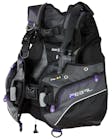
Jacket Style Scuba BCDs have a bladder (the compartment that holds air), or bladder system, that surrounds your torso similar to a life jacket. These Scuba BCDs are best suited for divers who want or need to maintain a vertical orientation in the water or spend a lot of time on the surface (like shore divers). This style also usually has lots of D-rings and pockets. One thing to keep in mind is that this style tends to come up higher on your sides, so depending on your structure, be aware that this style might ride up in the underarm area.
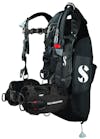
Back Inflate Scuba BCDs place the bladder behind the diver. Many divers find this more comfortable, as it allows for easier movement, and feels less restrictive. A rear inflation BC also helps divers maintain a horizontal body position while in the water. This style is more streamlined and usually has fewer pockets.
When choosing which style best suits you, consider what activities you’ll be participating in while diving. Also consider whether you’d prefer lots of D-rings and pockets (Jacket) or a more streamlined/minimalist style (Back Inflate). That’ll help narrow down which style you’ll be happier with, then we can move on to other considerations.
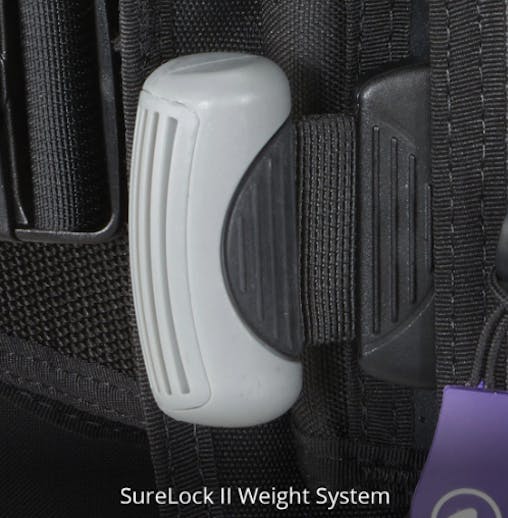
The next thing I want to talk about is safety. This is probably the primary reason I recommend purchasing your own BCD. When you’re familiar with your gear, you can react without hesitation. This is why you want to choose a BC that you are comfortable with and that you can operate easily. The things I tend to focus on in safety include Integrated quick release weight pockets and Dump valves.
Integrated quick release weight pockets - You need weights to counteract your buoyancy. These pockets allow you to carry all your weight in your BC, removing the need for a weight belt. This is an easy way to make you more streamlined in the water. Also considered safer than a weight belt because you can, in an emergency, quickly and easily drop your weight one-handed. You’ll want to double check the weight capacity to ensure the BC you choose can carry enough weight to sink you and your gear.
Dump valves -Handy devices used to dump air out of your BC with a quick tug on the release when needed. My experience has led to a preference for a BC with at least one dump valve on or near the shoulder and one on the back, near the bottom of the BC. The reason for this is simple. When you’re in the water with your head up, all the air is in the top of your BC and is easily released with a quick tug on the dump valve near your shoulder. However, when inverted in the water, your butt might be the higher point meaning that the air is all in the bottom of your BC. If you’ve been inverted and tried to use the dump valve on the shoulder, you know that doesn’t work out. A dump valve near your butt allows you to maintain your position and activity in the water while allowing you to release as much or as little air as necessary.
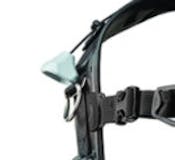
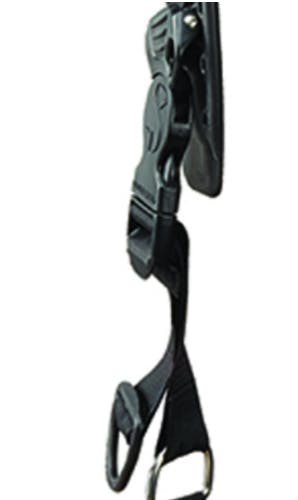
A comfortable Scuba BCD is the difference between having fun and surviving the dive. I like to recommend Scuba BCs with adjustable shoulder, chest, and waist straps. This allows us to get the sizing in height and width right so your BC fits like it was made just for you. Your BC should inflate around you, not squeeze you when inflated. Additionally, a properly fitted BC, especially when you’re trying it on without your wetsuit, should have about 6 inches of webbing to spare at each adjustment point.
Some people think that Male and Female specific Scuba BCDs are the same. This isn’t true. When you start looking at the BCs side by side, you see that the shoulder straps on the women’s BCs are narrower. This is because, on average, women’s shoulders are narrower. There’s also usually a little more curve in the straps in the chest area on a BC made for women. The chest strap buckle is also usually located a little higher on the women’s model than on the Men’s. And the straps that adjust the torso up and down on the front tend to have an adjustment point that’s a little lower on the body of the women’s version than the men’s version. Finally, the waist. Women’s bodies tend to be a bit more curvy in the waist and hip area than men’s. BCs made for women take this into consideration and deliver a more comfortable fit.
To sum it up, whether male or female, the best BC for you is the one that’s most comfortable.
Though it seems like a no-brainer, we have to address durability. Many of my customers come in and admit they bought cheap, old gear online to try and save money. Often times this gear either fails or falls apart quickly. Your Scuba BCD is a key part of your life support system under water. When looking at BCDs, I always recommend gear that will stand up to the conditions you intend to dive in. Other things I consider when recommending Scuba BCDs is double stitching, high quality thread, and the best bindings possible.
We know it sounds simple; however, when you reach the surface after a particularly strenuous, long dive, you want to be able to hit the inflate button and relax on the surface until your boat picks you up. If you go cheap, you risk the BC not holding air. This means you’re either going to dump your gear or tread water wearing heavy gear and weights. Not ideal as this puts you and your dive buddy at risk. Not a situation I’d recommend.
Additionally, I highly recommend that you look for gear that has been put through extensive UV, abrasion, salt water, and chlorinated water testing. This way, you know you’re purchasing gear that will last, stand up to the elements, and perform when you need it to. Some of the top brands we carry, ScubaPro, Mares, and Aqualung have done this type of testing.
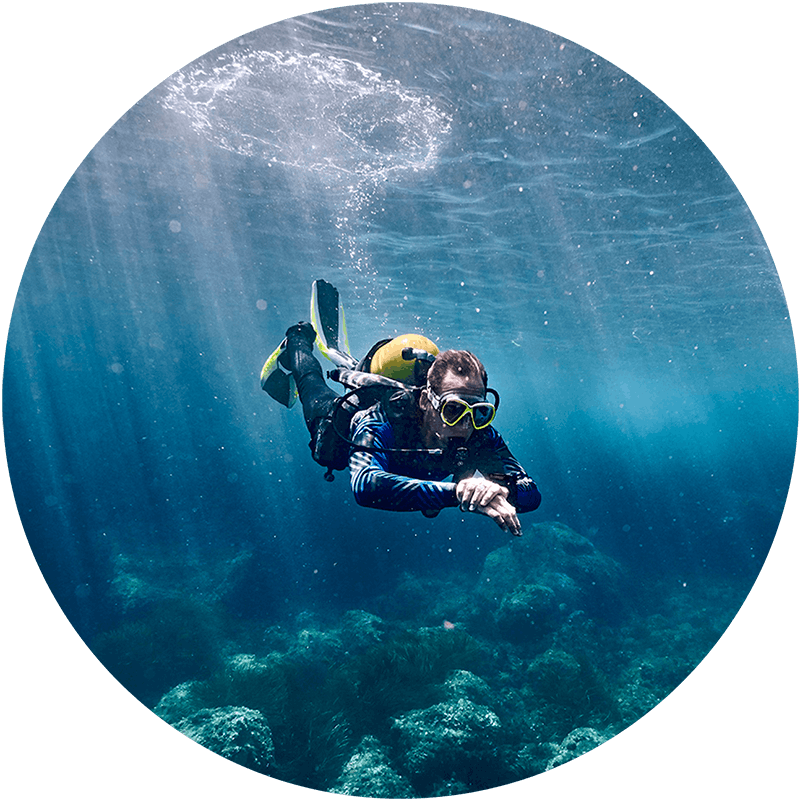
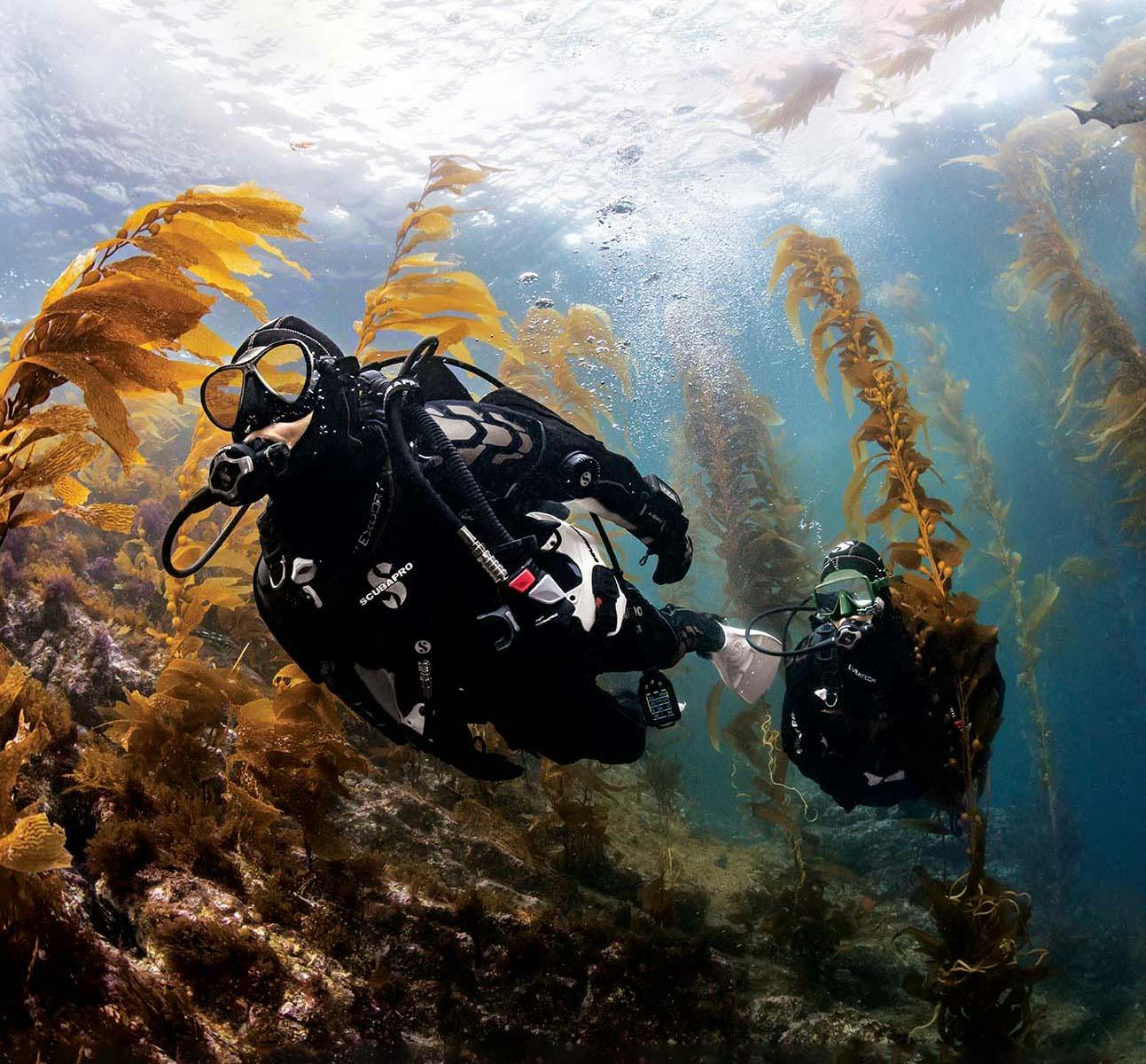
This is where we get to the fun stuff. I recommend focusing on a BC that’s functional, safe, durable, and reliable. When you have that dialed in, you also want one that you enjoy diving. Many of my customers have a Scuba BC for local dives and one for Travel. Others have just one BC for all occasions. If you decide to get into the tech end of diving, you’ll likely wind up with several BCs and harnesses. However, that’s a whole other conversation.
What matters here is that the BC you pick is right for the job you want it to do. Do you need pockets? Add them on if you don’t have enough. Accessories are a great way to customize your BC. When it’s all said and done, if you want your BC to match your fins and mask, pick up the customization kit (most brands have kits available) and make it happen. Some divers make fun of color coordinated divers; however, when you’re on a boat dive with 10 to 20 other divers, I find it easier to identify my dive buddy in the water if they have some color on their gear. Just my preference.
Just know that there’s a BC made for everyone, whether you dive once a year or every week. Finding the right one for you might take us a little time, and that’s why I’m here for you. I’ve seen it all and since I’ve been in the industry for many years, I’ve got a pretty good idea which BCs are going to fit you best and which ones are right for your specific needs.
Written by Hal Hyman
What is a BCD in scuba diving?
A Buoyancy Control Device (BCD) is a piece of diving equipment that allows a diver to control their buoyancy underwater. It consists of an inflatable bladder that can be filled with air from the diver's tank or released to adjust buoyancy.
How does a BCD work?
A BCD works by inflating or deflating its bladder to change the diver's volume, affecting buoyancy. Adding air increases buoyancy, helping the diver ascend, while releasing air decreases buoyancy, aiding in descent or maintaining neutral buoyancy.
What types of BCDs are available?
The main types of BCDs are jacket-style, back-inflation, and hybrid. Jacket-style BCDs wrap around the diver’s torso, back-inflation BCDs have the bladder only on the back, and hybrid BCDs combine features of both styles.
How do I maintain my BCD?
To maintain a BCD, rinse it thoroughly with fresh water after each dive, particularly the bladder and inflator mechanism. Regularly check for leaks, inspect and clean the dump valves, and have it serviced annually by a professional.
What are integrated weight systems in BCDs?
Integrated weight systems allow weights to be placed directly into pockets on the BCD, eliminating the need for a separate weight belt. This can improve comfort, streamline the diver's profile, and make weight management easier.
Can I travel with my BCD?
Yes, you can travel with your BCD. There are travel-friendly models that are lightweight and compact, designed specifically for easy packing. Always check airline regulations for scuba gear and ensure your BCD is clean and dry before packing.